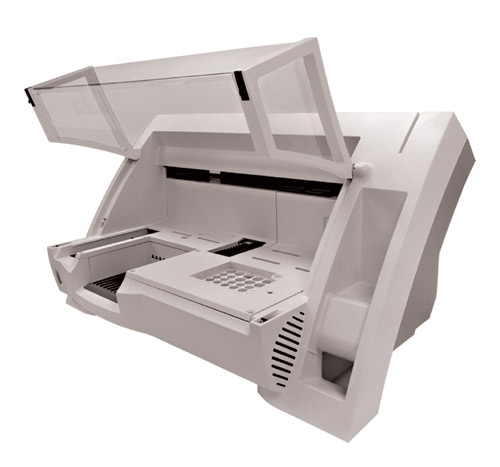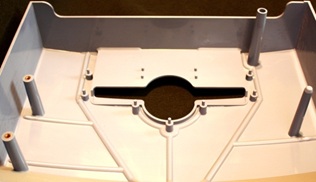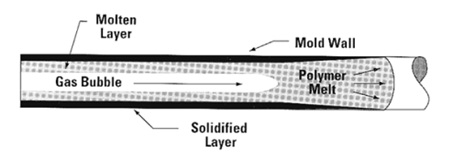Internal
Internal gas assist injection molding is a low pressure, conventional injection molding process that injects pressurized nitrogen gas into the interior of a short shot of melted material.
The gas flows through strategically designed and placed gas channels, following the path of least resistance to displace the material in the thick areas of the part by forming hollow sections. This process reduces material usage but does not compromise the appearance and functional performance of the part.
Next, the pressurized gas packs and holds the molten resin against the cavity walls until the part solidifies. Constant gas pressure helps keep the part from shrinking as the part begins to cool and prior to being ejected from the mold. Once the part solidifies, the gas is vented from the tool.
Most thermoplastics can benefit from the gas assist injection molding process, including Polypropylene (PP), ABS, PC, PC/ABS, HIPS and Nylon.
The Design and Cost advantages of Gas Assist Molding include:
- Increased Dimensional Stability of Part
- Thick Sections Without Sink Marks or Surface Blemishes
- Reduced Part Weight (as much as 30% to 40%)
- Reduced Cycle Time
- Smaller Press Size Can be Used – Reduced Hourly Rates
- Ideal for Metal-To-Plastic Conversion








